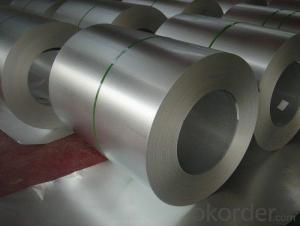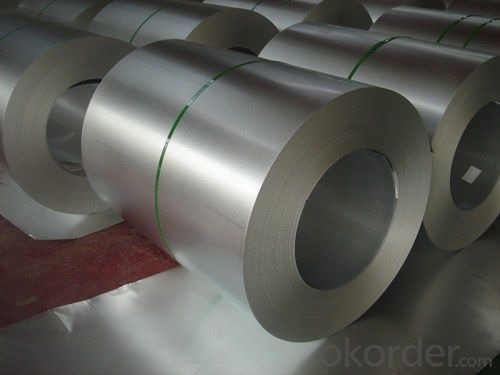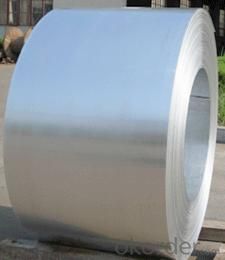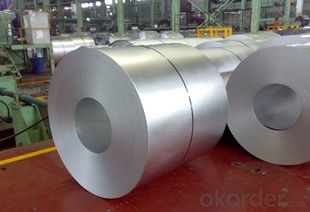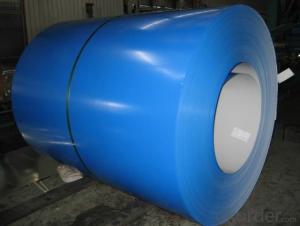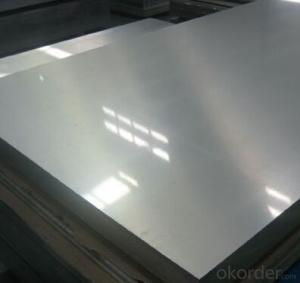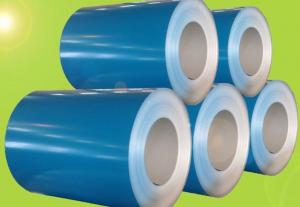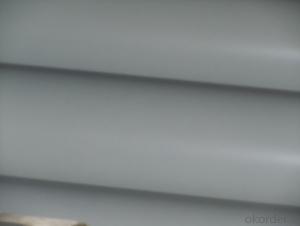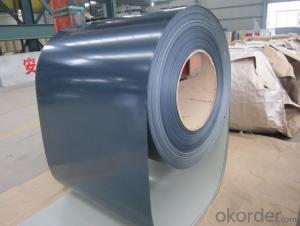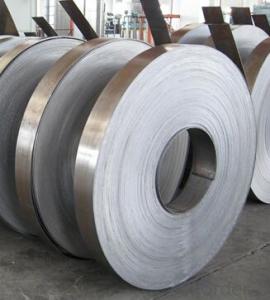HOT-DIP ALUZINC STEEL COILS
- Loading Port:
- China Main Port
- Payment Terms:
- TT OR LC
- Min Order Qty:
- -
- Supply Capability:
- -
OKorder Service Pledge
OKorder Financial Service
You Might Also Like
Quick Details
Standard: | AISI,ASTM,BS,DIN,GB,JIS | Grade: | SGCC,DX51D/DX52D/S250,280GD | Thickness: | 0.12-4.0 mm |
Place of Origin: | Brand Name: | N/M | Model Number: | ssp-226 | |
Type: | Steel Coil | Technique: | Cold Rolled | Surface Treatment: | galvanized/ Galvalume/zinc coatting |
Application: | strong anti-corrosion ability,cold bending molded manufacturablity | Special Use: | High-strength Steel Plate | Width: | 600-1250 mm |
Length: | in coil | product: | g40 prime/secordary hot-dip galvanized cold rolled steel coil/sheet |
|
|
Packaging & Delivery
Packaging Detail: | standard export package,Other types of packing can be customized as per client's requirement. |
Delivery Detail: | --days |
1.Mateials:SGCC,DX51D / DX52D /S250,280GD
2.Size:width:600-1250mm(900mm,1215mm,1250mm,1000mm the most common)
thickness:0.15-2.0mm
length:1000-6000mm,as your require
3.Zinc coating :60-180g( as required)
4.Coil id:508mm
5.Coil weight: 3-5MT(as required)
6. Surface:regular/mini/zero spangle, chromated, skin pass, dry etc.
7. Application:
With excellent cold bending molded manufacturablity, good decoration effect, strong anti-corrosion ability, galvanized steel coils and sheets are also pollution-free and easily recycled. Accordingly, they can be used as final products and basic plates of color coated steel coils.
8.Packaging Details:
Standardexport package.
Othertypes of packing can be customized as per client's requirements.
- Q: All the appliances in my kitchen are stainless steel, and I hate how they look becuase every time I wash them they are full of streaks. Is there a good cleaner made for stainless steel that won't leave streaks?
- Stainless Steel Appliance Cleaning Stainless steel kitchen appliances look best when they're clean and shiny. To clean tough stains and cooking grease, and give them a dazzling shine, try the same detergent you would use when washing the dishes. One formulated to cut grease works especially well.This also works well for general kitchen cleaning.Waterless hand soap also works great as a polish, simply rub on, and polish - no rinsing.=)
- Q: What are steel coils?
- Steel coils are long, flat sheets of steel that are rolled into a circular shape and wound tightly to form a coil. These coils are commonly used in various industries, including automotive, construction, and manufacturing, as they serve as a raw material for the production of various steel products such as pipes, tubing, and sheet metal.
- Q: What are the different types of steel coil slitting lines?
- There are several different types of steel coil slitting lines, including rotary shear slitting lines, loop slitting lines, and drag tension slitting lines.
- Q: Who started or popularized the use of the steel guitar in country music? Early country songs contained no steel guitars but by 1950 the steel guitar had become a staple of country music.
- There was the Dulcimer that was drowned out by the Accordeen. The Dobro was the natural evolution that led to the steel guitar or Slide Guitar as an electrical version to replace the American origin Dulcimer. An early player of the slid guitar was Ray Keefer who played at the Grand ol Opry and in the 40s before and after WWII.
- Q: What are the common uses of pre-painted steel coils?
- Pre-painted steel coils are commonly used in various industries such as construction, automotive, and appliances. They are utilized for manufacturing roofing and wall panels, garage doors, ductwork, and other building components. In the automotive sector, pre-painted steel coils are employed to produce body panels, trims, and other exterior parts. Additionally, they find applications in the manufacturing of household appliances like refrigerators, washing machines, and ovens.
- Q: What are the different methods of galvanizing steel coils?
- There are three main methods of galvanizing steel coils: hot-dip galvanizing, electro-galvanizing, and continuous galvanizing. Hot-dip galvanizing involves immersing the steel coil in a bath of molten zinc, providing a thick and durable coating. Electro-galvanizing uses an electrical current to deposit a thin layer of zinc onto the steel surface. Continuous galvanizing is a process where the steel coil is continuously passed through a series of zinc baths, resulting in a uniform coating.
- Q: What are the different methods of coil leveling?
- The different methods of coil leveling include roller leveling, stretcher leveling, and temper leveling.
- Q: What is the standard thickness of steel coils?
- The standard thickness of steel coils can vary depending on the specific application and industry requirements. However, in general, steel coils are typically available in a range of thicknesses between 0.5mm to 10mm. The desired thickness of a steel coil is determined by factors such as the intended use, structural requirements, and manufacturing processes. Thicker steel coils are often used for heavy-duty applications that require greater strength and durability, while thinner coils are suitable for lighter applications where flexibility and weight reduction are important. It is important to consult industry standards and specific project requirements to determine the appropriate thickness for steel coils in any given application.
- Q: What are the safety regulations for steel coil production facilities?
- The safety regulations for steel coil production facilities differ depending on the specific country or region. However, these facilities typically implement some common safety measures. One primary safety regulation is the proper training and education of employees. All workers in steel coil production facilities must undergo training on potential hazards and the correct safety procedures to follow. This includes training on handling heavy machinery, operating cranes or forklifts, and understanding the risks associated with working in a high-temperature environment. Maintenance and inspection of equipment are also important safety regulations. Regular inspections should be carried out to ensure that machinery and equipment are in good working condition and do not pose any safety risks. Moreover, maintenance procedures should be implemented to promptly address any issues or malfunctions. Fire safety is a crucial aspect of safety regulations in steel coil production facilities. Fire prevention measures like fire alarms, sprinkler systems, and fire extinguishers should be installed. Regular fire drills should also be conducted to ensure that all employees are familiar with evacuation procedures and can respond swiftly and effectively in case of a fire emergency. The use of personal protective equipment (PPE) is another vital safety requirement in steel coil production facilities. Employees must be provided with appropriate PPE such as safety glasses, helmets, gloves, and steel-toed boots to protect them from potential hazards like falling objects, sharp edges, and high temperatures. Additionally, safety regulations often necessitate the implementation of safety barriers and guards around machinery and equipment to prevent accidents and injuries. This includes safety gates, railings, and protective covers that restrict access to hazardous areas and prevent unauthorized entry. Regular safety audits and inspections should be conducted by relevant authorities or safety professionals to ensure compliance with safety regulations. Companies should also foster a culture of safety by encouraging open communication about safety concerns, providing safety training and refresher courses, and rewarding employees for adhering to safety protocols. It is important to note that safety regulations may vary across jurisdictions, and it is advisable to consult the specific regulations applicable in the country or region where the steel coil production facility is located.
- Q: Personally, I like Steel Cage matches to end in pinfalls. One of the biggest selling points of a Cage match is that it is to keep the competitors in and keep others out; essentially ensuring that it's a 1 on 1 match. As a result, I believe that pinfalls or submissions are important - but I know there's a lot of people that believe cage matches should only end in escape. What do you think??
- I agree with what you are saying but I prefer Steel Cages matches that should only end in escape by climbing out of the cage. Escaping through the Steel cage door should be done away with. I wouldn't mind keeping pinfalls and submissions as part of Steel Cage matches as well as escaping via climbing out of the cage. Escaping through the Steel Cage door should be stopped and not aloud from now on. The fact that some one can just exit through a door defeats the purpose of trying to keep the competitors inside the Steel Cage and interference outside the Steel Cage. The Steel Cage door should be chained up and padlocked until the match is officially over.
Send your message to us
HOT-DIP ALUZINC STEEL COILS
- Loading Port:
- China Main Port
- Payment Terms:
- TT OR LC
- Min Order Qty:
- -
- Supply Capability:
- -
OKorder Service Pledge
OKorder Financial Service
Similar products
Hot products
Hot Searches
Related keywords
